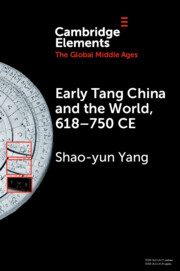Element contents
Early Tang China and the World, 618–750 CE
Published online by Cambridge University Press: 05 May 2023
Summary
- Type
- Element
- Information
- Online ISBN: 9781009214612Publisher: Cambridge University PressPrint publication: 25 May 2023
Bibliography
- 5
- Cited by



